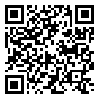Volume 11 - بهار و تابستان 87-
mjms 2008, 11 - بهار و تابستان 87-: 0-0 |
Back to browse issues page
Download citation:
BibTeX | RIS | EndNote | Medlars | ProCite | Reference Manager | RefWorks
Send citation to:



BibTeX | RIS | EndNote | Medlars | ProCite | Reference Manager | RefWorks
Send citation to:
Norouzi R, Dalimi A, Forouzandeh M, Ghaffarifar F. Application of PCR-ELISA method based on RE domain for diagnosis of toxoplasmosis in experimentally infected rat
(Rattus norvegicus). mjms 2008; 11
URL: http://mjms.modares.ac.ir/article-30-11465-en.html
URL: http://mjms.modares.ac.ir/article-30-11465-en.html
1- M.Sc. Student, Department of Medical Parasitology, School of Medical Sciences, Tarbiat Modares University, Tehran, Iran
2- Professor, Department of Medical Parasitology, School of Medical Sciences, Tarbiat Modares University, Tehran, Iran
3- Associated Professor, Department of Medial Biotechnology, School of Medical Sciences, Tarbiat Modares University, Tehran, Iran
4- Associated Professor, Department of Medical Parasitology, School of Medical Sciences, Tarbiat Modares University, Tehran, Iran
2- Professor, Department of Medical Parasitology, School of Medical Sciences, Tarbiat Modares University, Tehran, Iran
3- Associated Professor, Department of Medial Biotechnology, School of Medical Sciences, Tarbiat Modares University, Tehran, Iran
4- Associated Professor, Department of Medical Parasitology, School of Medical Sciences, Tarbiat Modares University, Tehran, Iran
Abstract: (5259 Views)
Objective: Toxoplasmosis may cause significant damage to the developing fetus and is a life-threatening opportunistic infection in immunocompromised persons. Molecular methods are known to be more sensitive and more specific than serological assays for diagnosis of toxoplasmosis. Application of quantitative PCR has evolved sensitive, specific, and rapid method for the detection of RH strain of Toxoplasma gondii DNA.
Materials and Methods: In the present study, quantitative PCR-ELISA (Polymerase Chain Reaction-enzyme linked immunosorbent assay) was used for quantization of Toxoplasma gondii in the blood of 15 rats (Rattus norvegicus) infected experimentally with the parasite.
In this regard Polymerase PCR-ELISA was developed for rapid detection of Toxoplasma gondii. Specific primers targeting RE gene were selected and used for the amplification of toxoplasmic DNA. DIG-labeled (digoxigenin-labeled) amplicons were hybridized with a specific biotinylated oligonucleotide probe in solution phase and subsequently transferred to streptavidin coated plates. The captured DNA-DNA hybrids were colorimetrically detected by the addition of anti-digoxigenin antibody peroxidase conjugate and substrate.
Results: DNA of Toxoplasma gondii were efficiently detected within 4 hours and no interference was encountered in the amplification and detection of the parasite.
Conclusion: Efficiency of the PCR-ELISA system was evaluated we found with several advantages in terms of sensitivity, rapidity and simplicity in this system.
Keywords: PCR-ELISA
Received: 2008/05/3 | Accepted: 2008/05/3
| Rights and permissions | |
 |
This work is licensed under a Creative Commons Attribution-NonCommercial 4.0 International License. |







